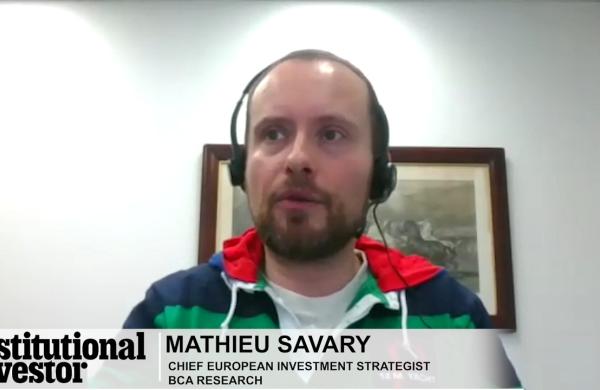In 1995, during his second year at Harvard Business School, Mortimer (Tim) Buckley wrote a case study on Vanguard Group's nascent Web operation. Buckley had an insider's perspective: After earning an AB in economics at Harvard College in 1991, he had served as an assistant to Vanguard's then-chairman John Bogle and listened carefully as Vanguard's senior management -- including current chairman and CEO John Brennan -- discussed the Internet's possible impact on their business.
"From that point on I was really captivated by it," says Buckley, now managing director of Vanguard's information technology division, reporting to Brennan.
Since the 1995 launch of its Web site, Vanguard has greatly changed the way it interacts with its clients. Phone and mail contact have shrunk dramatically; 80 percent of Vanguard's 18 million shareholders now manage their accounts online. The site itself has evolved from a simple informational posting to a fully interactive tool that shareholders use to conduct transactions and receive advice from financial advisers in real time.
Buckley, 36, learned about satisfying client needs as a manager in Vanguard's retail services group, where he landed after finishing his MBA. Next came a stint as head of the Web services division. He assumed his current position in October 2001 and continues to view technological development through the unique Vanguard prism.
"Since 1999 our Web site has saved us hundreds of millions of dollars," Buckley reports. "We return those profits in the form of lower costs to our fund shareholders."
Buckley, who ranked No.14 in Institutional Investor's 2005 Online 40 poll of the leading e-finance innovators, discussed Vanguard's technology initiatives in a recent interview with II Contributor Suzanne Lorge.
Institutional Investor: Describe your role and how Vanguard manages IT.
Buckley: Chief information officer is basically head of IT here. There are about 2,700 people in IT, split up into a few major groups. We have three application development groups serving our business lines: one for retail, one for our institutional business and the third for corporate, or internal, needs. We have a Web services group that is responsible for continually improving the Vanguard.com site, and I recently started working with the head of corporate strategy and the planning group on where we're going as a company.
In what ways has Vanguard's view of the Internet changed over the years?
When I came into the role, just after September 11, the concept of disaster recovery was changing. It went from something you needed to do for a short period of time to a comprehensive way of planning for indefinite failures over quite some time. We recognized that regardless of the circumstances, we had to be able to function with minimal or no delay, even if that meant working from a different site with different staff. This became a huge area of attention for us and required tremendous investment. At the same time, the bear market made us look at projects that would increase Vanguard's productivity as well as productivity within IT.
What about recent changes?
The regulatory environment has been very demanding. Regulators have demanded systems to prevent frequent trading, and we've made sure to stay at the forefront in that area. But what's really amazing and almost ironic is that since the bursting of the Internet bubble, the Web has really taken off. Suddenly, after viewing it as something of a curiosity, our shareholders moved online. People not only started looking up their accounts online, they started to transact online business and manage their portfolios online. Now there isn't anything we do that isn't Web-centric.
What specific tech changes have you initiated recently to respond to client demand?
After investing so much in the Web site, we reached a point about two years ago where our clients had better capabilities than the associates who were taking care of their calls. We could have rebuilt the desktop but decided not to. Instead, the Web site has become our desktop. Sure, we now have enhanced client management features on it, but essentially it's a shared experience. Our associates and clients are looking at the same site; the associate can complete a form and send it to you, and you can e-sign it. Looking forward we see continued buildout and collaboration. Our 2006 agenda is about making it easier and more convenient to invest -- whether in a 401(k), an IRA or any other way. Going forward it's more about an advisory relationship in which we can help you become a better investor and use the Web to do it.
Will the telephone be part of your online services?
Yes. We started with collaboration back in 2001, when it was clunky. People didn't have high-speed connections. They would call from their cell phones while using their home lines to dial up to our URL. When it worked it was fantastic, but it was too cumbersome, given the environment. We realized that most people just wanted to be looking at the same screens at the same time and didn't necessarily want us to take over their PC. That's when we came up with our shared-experience concept. Now with voice-over Internet Protocol and high-speed lines in the home, we can reintroduce click-to-talk, which we think most people like.
Give us an idea of your volume.
On a busy day we take over 300,000 log-ons and 50,000 phone calls. Back in 1999 we'd take just 20,000 log-ons and 100,000 phone calls. Clients now prefer to
do their administration online; 53 percent of shareholders opened their accounts online, and 70 percent of exchanges happen online. Even online loans are taking off. All of our applications are built right through to our recordkeeping systems, so nothing kicks out in a back office somewhere and has to be rekeyed. The more clients migrate online, the more money they save for themselves. Of course, we've never prevented anybody from calling us, and we find that investors like to use the phone more to discuss objectives and what they're trying to accomplish and less to ask about a price or an account balance.
What are some of your top technology priorities for investment and development in the year ahead?
First, let me tell you about a surprise this year: Roth 401(k). We rolled it out, and clients are lining up for it. Looking ahead I have to mention portals. They've been around for a while, but we want to develop them.
We believe that as a plan sponsor, a company should be able to choose best-in-class providers for its 401(k) plan. You also should be able to integrate that plan with all the retirement benefits you provide employees. To do that as a totally integrated experience, some say you must go to one company. We say that's unnecessary; you can choose best-in-class providers and consolidate the information with technology through a portal. We're doing a lot of that already. We're also working on ways to customize the information available to different participants to better suit their needs. Someone new to a plan, for instance, might have completely different needs from someone who is about to retire.
In addition, we're looking into wireless services -- not in the sense of people trading from PDAs, but from the point of view of giving investors a choice in the way they interact with Vanguard. We're excited about changes in voiceover IP, but you don't have a mass of people yet who are using their cable modem for phone service. When that happens, I think you'll see a change in how clients interact with us. It makes collaboration that much easier.
How does IT fit in the Vanguard corporate culture?
We continue to believe technology is the way we distinguish our service. Unlike others, we didn't cut back during the bear market. We continued to invest in technology and in ways to differentiate our service and ensure best-in-class disaster recovery. With 2,700 IT people and about a third of Vanguard's operating budget, there's a lot we can get done. But we try to make sure that we spend efficiently on maintenance, so that we can bring out new applications for our clients. For example, we've been able to figure out how to run two data centers for the price of what it cost us to run one data center in 2001. That frees up money for new applications for shareholders. That's our culture: pressuring ourselves to improve efficiency, so we can give more bang for the buck.





